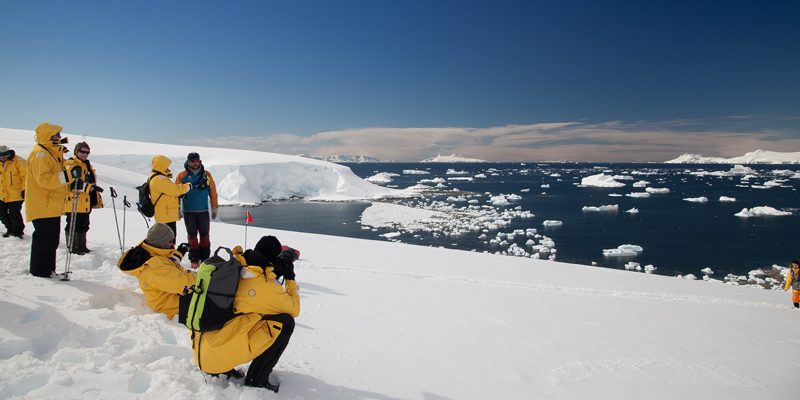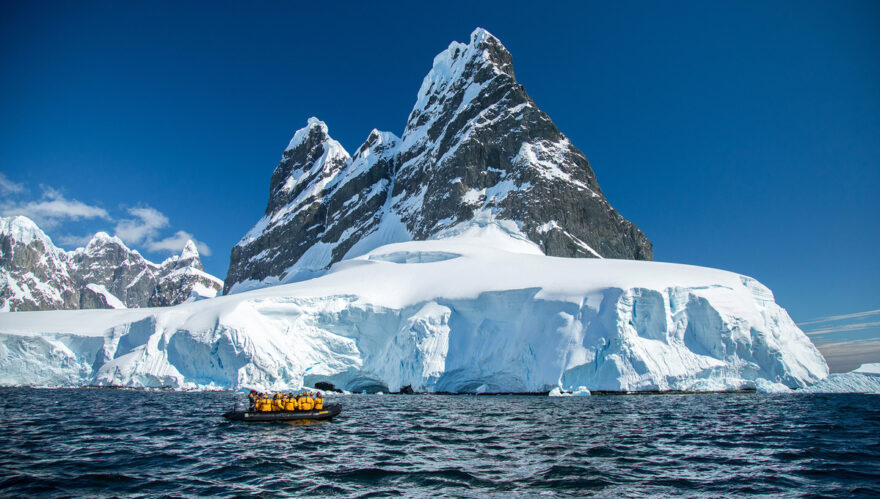From Penguins To Icebergs: A Photographer’s Guide To Exploring Antarctica

Antarctica, the southernmost continent on Earth, is a photographer’s paradise. Its pristine and otherworldly landscapes have captivated adventurers and nature enthusiasts for decades. From towering glaciers to majestic icebergs, Antarctica offers a visual feast, unlike any other place on the planet. The sheer isolation and untouched wilderness make it a truly unique destination for photographers seeking unparalleled beauty and a sense of awe-inspiring grandeur.
The best time to visit Antarctica: Climate and wildlife considerations

Choosing the right time to embark on an Antarctic photography tour is crucial for capturing the continent’s natural wonders at its best. The austral summer, from November to March, stands out as the most popular season for photography expeditions. During this period, temperatures range from -2°C to 8°C (28°F to 46°F), offering a more comfortable environment for photographers to work in extreme conditions. Moreover, this season aligns with the breeding season of numerous Antarctic species, providing abundant opportunities to witness and photograph the enchanting sight of adorable penguins, graceful seals, majestic whales, and a diverse array of seabirds.
Essential photography equipment for capturing Antarctica’s unique landscapes
When embarking on a photography expedition to Antarctica, it’s crucial to have the right equipment to capture the continent’s unique landscapes. Some essential items include a sturdy DSLR or mirrorless camera with a wide-angle lens for expansive vistas, a telephoto lens for capturing wildlife, extra batteries and memory cards for extended shooting in cold temperatures, a sturdy tripod for stability in windy conditions, and waterproof and insulated camera bags to protect equipment from moisture and extreme cold. Polarizing and neutral density filters can also enhance colors and control light in the harsh Antarctic environment. With the right gear, photographers can capture the beauty of Antarctica with precision and clarity.
Preparing for the journey: Necessary permits and travel arrangements

Before embarking on an Antarctic photography expedition, it’s crucial to make the necessary preparations. Obtaining permits from the appropriate authorities, such as the International Association of Antarctica Tour Operators (IAATO), is essential to ensure compliance with environmental regulations and sustainable tourism practices. Additionally, booking through reputable tour operators with experience in Antarctic travel is recommended, as they can guide logistics, and safety measures, and expert guides who can enhance your experience and knowledge of the region.
Exploring the wildlife: Penguins, seals, whales, and seabirds
One of the highlights of an Antarctic photography expedition is the opportunity to observe and capture the region’s incredible wildlife. From the iconic Emperor penguins to the playful Weddell seals, the abundance of wildlife in Antarctica is truly awe-inspiring. To capture their beauty, patience, and respect are key. Observing animals from a safe distance and using long lenses allows for intimate shots without disturbing their natural behavior. It’s important to remember that we are visitors in their fragile habitat and should always prioritize their well-being over capturing the perfect shot.
Capturing the vastness: Techniques for photographing expansive icebergs

Photographing expansive icebergs in Antarctica requires specific techniques to convey their immense scale. To capture their grandeur, try finding a unique perspective by experimenting with different angles and compositions. Including a point of reference, such as a boat or a person, can emphasize their size. Utilizing long exposures can create a sense of movement in the surrounding water, adding drama to the image. Additionally, paying attention to light and capturing icebergs during the “golden hour” can enhance their colors and add warmth to the scene, resulting in striking photographs that convey the vastness of the icy landscapes.
The challenge of extreme conditions: Protecting your equipment in Antarctica
Photographing in Antarctica poses unique challenges due to the extreme conditions. To protect your equipment, it’s crucial to take precautions. Keeping your gear warm by storing batteries close to your body and using hand warmers prevents battery drain and condensation. Using lens hoods and filters safeguards lenses from snow, moisture, and salt spray. Regularly cleaning equipment with lens cloths and air blowers prevents ice buildup. Carrying backup gear is essential in case of equipment failure.
Composition tips for creating striking images in Antarctica’s icy landscapes

When photographing Antarctica’s icy landscapes, composition plays a vital role in creating striking and visually captivating images. One composition tip is to utilize the rule of thirds by dividing the frame into a 3×3 grid and placing key elements along the lines or intersections for balance and interest. Another technique is to incorporate leading lines, such as shoreline or iceberg edges, to guide the viewer’s eye through the image. Including foreground interest, such as rocks or ice formations, adds depth and scale to the scene. Embracing negative space can emphasize the vastness of Antarctica, allowing viewers to appreciate the isolation and magnitude of the landscape.
Connecting with the environment: Ethical photography practices in Antarctica
As photographers, it’s our responsibility to ensure we have a minimal impact on the fragile Antarctic ecosystem. Here are some ethical photography practices to follow:
- Respect wildlife: Maintain a safe distance from animals and avoid disrupting their behavior for the sake of a photograph.
- Leave no trace: Follow strict guidelines for waste management and dispose of any garbage properly.
- Minimize disturbance: Avoid excessive noise, sudden movements, or using flash, as they can startle or stress wildlife.
- Educate and inspire: Share your knowledge and experience to raise awareness about the importance of conservation and sustainable practices in Antarctica.
Sharing your experience: How to effectively showcase your Antarctica photographs

After an unforgettable Antarctic photography expedition, effectively showcasing your photographs is key to sharing your experience with the world. Creating a captivating online portfolio or blog allows you to showcase your best images along with compelling stories and insights. Participating in exhibitions and contests provides an opportunity to reach a wider audience and gain recognition for your work. Engaging on social media platforms like Instagram allows you to connect with the photography community and gain exposure by using relevant hashtags and interacting with fellow photographers. Collaborating with publications, magazines, or organizations can also provide avenues to showcase your photographs and contribute to their publications, websites, or campaigns.
Conclusion: The lasting impact of an Antarctic photography expedition
Embarking on an Antarctic photography expedition is a once-in-a-lifetime opportunity to capture the breathtaking beauty and unique wildlife of this remote continent. Through careful planning, ethical practices, and a keen eye for composition, photographers can create powerful images that not only showcase Antarctica’s splendor but also raise awareness about its fragility. By sharing our experiences and photographs, we can inspire others to appreciate and protect this pristine wilderness, ensuring its preservation for future generations to come.

